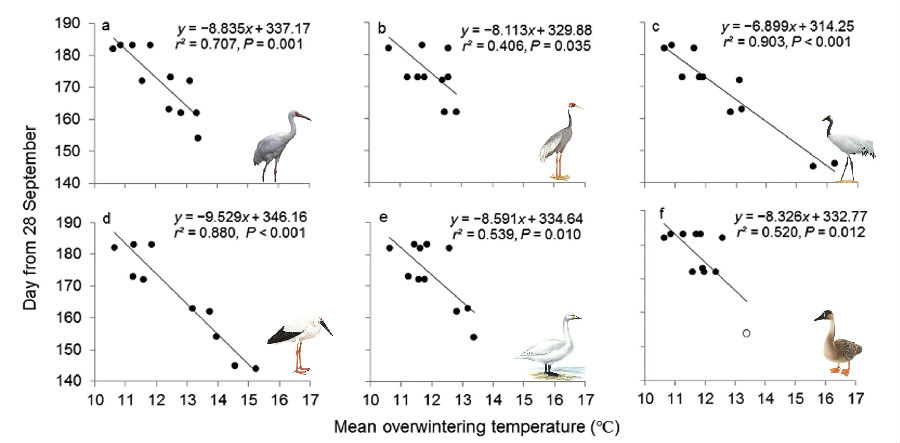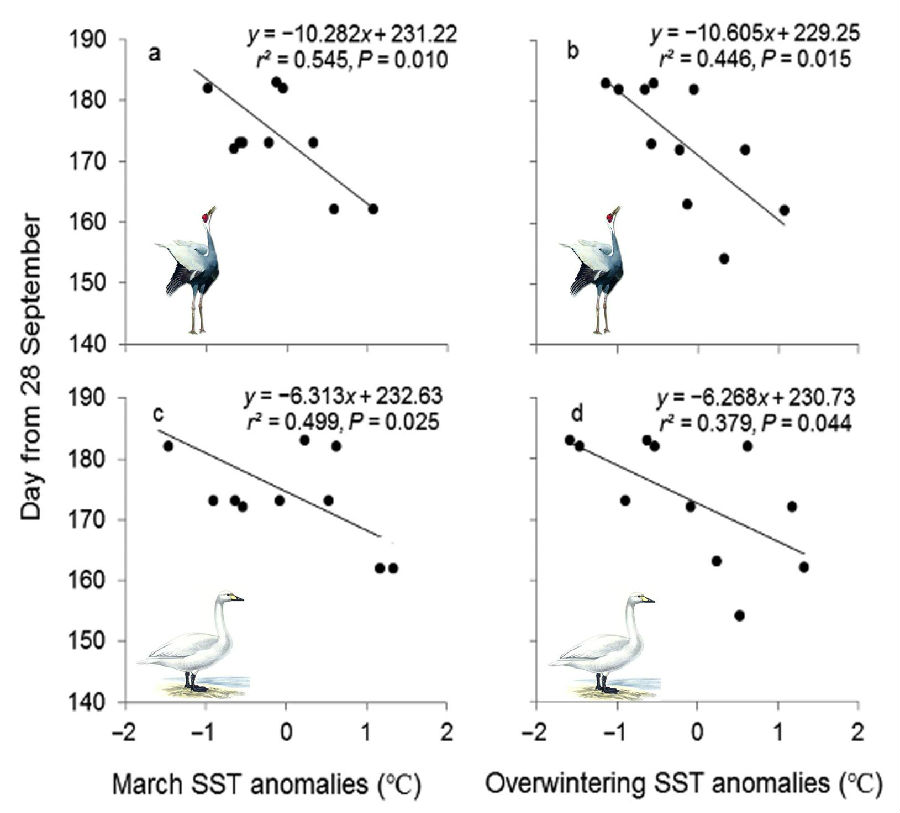Recently, Xu Fei, Ph.D. candidate of Department of Earth System Science, published an research paper titled "Local temperature and El Nino Southern Oscillation influence migration phenology of East Asian migratory waterbirds wintering in Poyang, China" at Integrative Zoology. Poyang Lake National Nature Reserve Authority Liu Guanhua Secretary is the cooperation of the paper.
Climate change may lead to a series of migratory phenology changes. Such as global warming caused by rising temperatures in early spring lead to changes in food availability, some species may not be able to adapt to climate change in a timely manner, resulting in breeding time and food space resources do not overlap, resulting in a decline in the number of populations. There are also studies that climate change has delayed most of the European waterfowl in autumn. However, the current research focused on the migration routes in Europe and the United States, and focus on the breeding ground temperature and the arrival time of migratory birds, migratory routes in East Asia and winter migratory phenology is often overlooked. For long-distance migratory birds, the migration time is greatly affected by wintering, migration routes and climatic conditions. Only concerned about the breeding ground can not really understand the time to reach the breeding ground to change the mechanism and the impact of the success rate of reproduction. Based on the habitat of winter habitat, this paper analyzed the interannual fluctuations of the arrival time of nine waterbirds in the Poyang Lake National Nature Reserve from 2002 to 2013, and their relationship with the local temperature factor (October temperature, fall temperature, three Monthly temperature, wintering temperature) and the El Ni?0?9o-Southern Oscillation (ENSO) index, trying to answer local temperature and macroscopically how the Southern Oscillation affects the scientific problems of the East Asian waterbirds reaching the winter habitat.


The study found that most of the waterfowl arrived in October, leaving the winter habitat of Poyang Lake in March, and there was no significant advance or delay in the arrival time of the East Asian waterbirds in 12 years. There was no significant correlation between arrival time and temperature and ENSO index, but there was a significant negative correlation between winter migration time and wintering temperature and ENSO index. That is, warm wintering so that waterfowl is more likely to get a richer food resources, the timely accumulation of sufficient energy is conducive to promote the early birds to leave the winter habitat, and vice versa.
The comprehensive results show that the response of waterfowl to the cumulative effect of local temperature for a long time is more sensitive than the response to the current short-term effect and large-scale climate fluctuation. The findings will play an important role in better understanding the environmental mechanisms of waterfowl migration patterns and the potential impacts of climate change.
According to the Thomson Reuters2016 Annual Report, "Integrative Zoology" has a factor of 2.070 in 2016.
Xu F, Liu G, Si Y (2017). Local temperature and El Ni?o Southern Oscillation influence migration phenology of East Asian migratory waterbirds wintering in Poyang, China. Integrative Zoology 12, 303–17.
http://onlinelibrary.wiley.com/doi/10.1111/1749-4877.12248/full